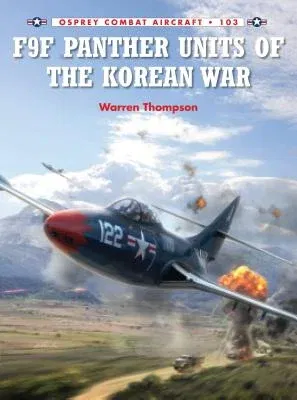Warren Thompson
(Author)F9F Panther Units of the Korean WarPaperback, 17 June 2014

Temporarily out of stock
Free Delivery
Cash on Delivery
15 Days
Free Returns
Secure Checkout

Part of Series
Combat Aircraft
Print Length
96 pages
Language
English
Publisher
Osprey Publishing (UK)
Date Published
17 Jun 2014
ISBN-10
1782003509
ISBN-13
9781782003502
Description
Product Details
Author:
Book Format:
Paperback
Country of Origin:
CN
Date Published:
17 June 2014
Dimensions:
24.38 x
18.29 x
1.02 cm
Genre:
20th Century
Illustrator:
ISBN-10:
1782003509
ISBN-13:
9781782003502
Language:
English
Location:
New York
Pages:
96
Publisher:
Series:
Weight:
272.16 gm